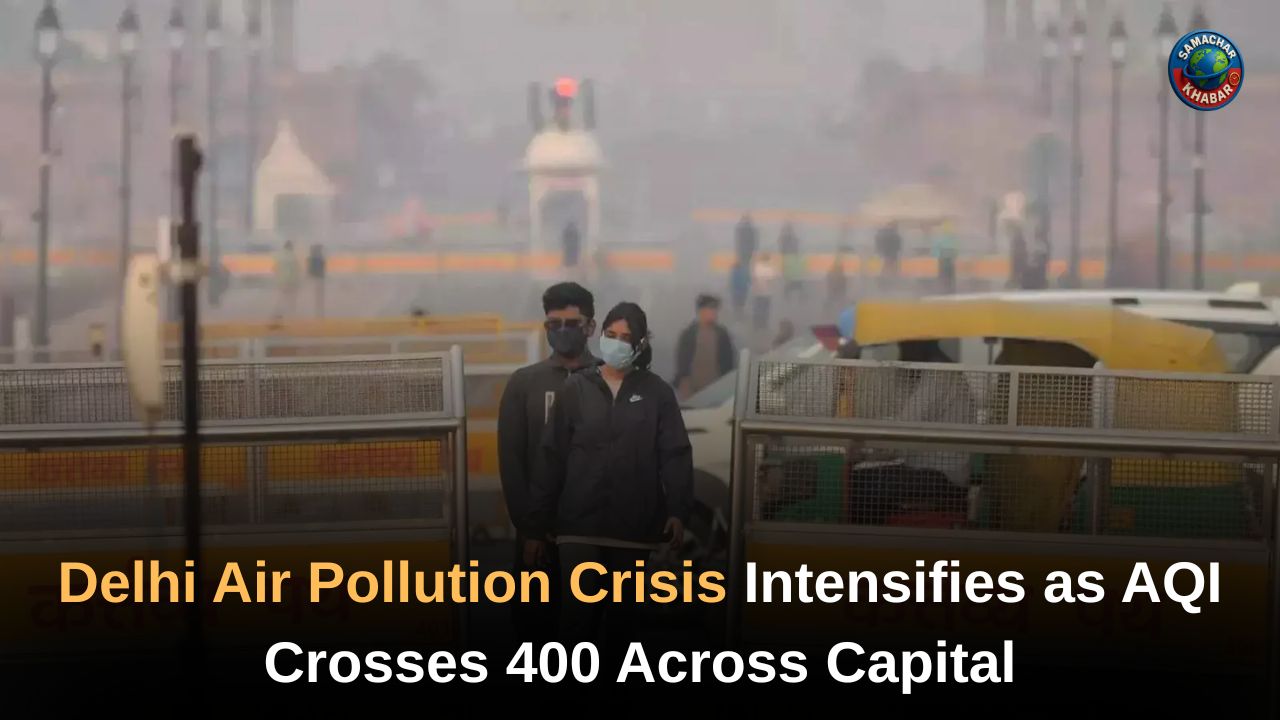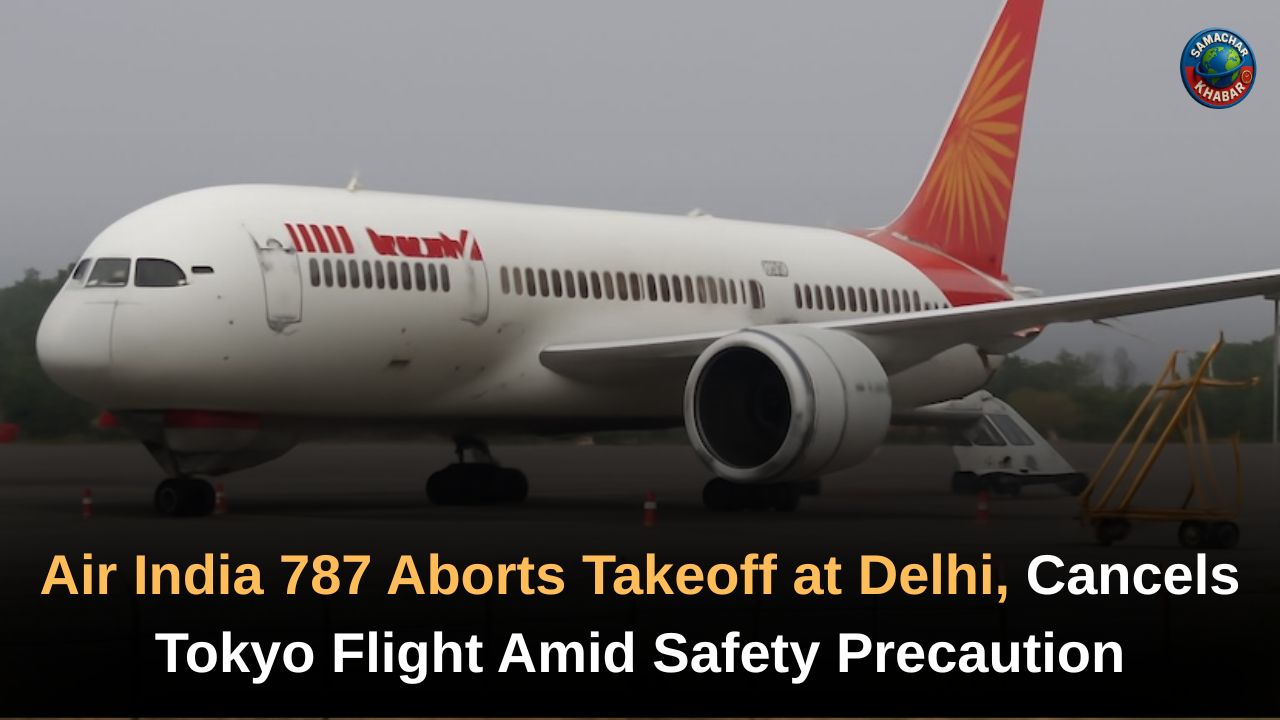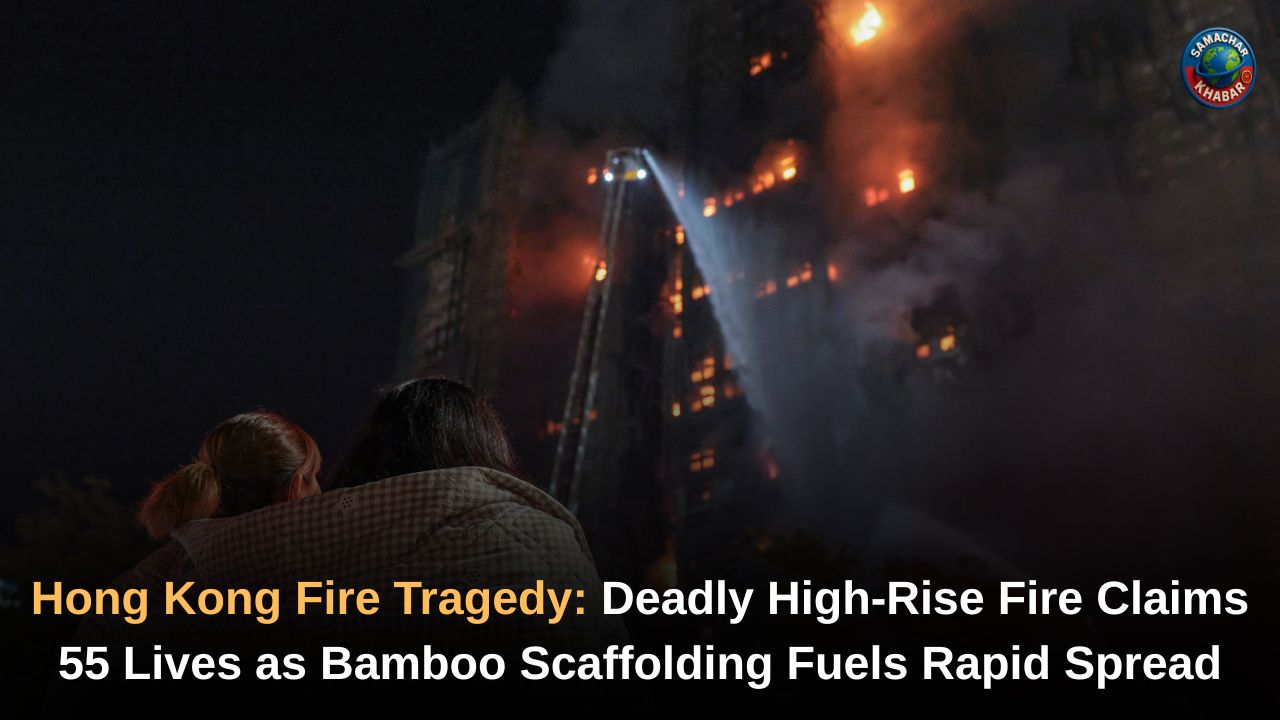A thick, toxic haze has once again tightened its grip over Delhi-NCR, pushing air quality into dangerous zones as multiple monitoring stations recorded AQI values above 400 this week. The Rekha Gupta-led Delhi government has activated strict emergency measures, including mandatory work-from-home for half the workforce, curbs on office attendance, and accelerated implementation of GRAP protocols.
As residents grapple with visibility loss, rising health complaints, and worsening smog levels, authorities have confirmed that the crisis is driven entirely by domestic pollution sources, with volcanic ash from Ethiopia having no impact on Delhi’s ground-level air quality.
Key Takeaways: Sharp Spike in Delhi Air Pollution Across NCR
- Several Delhi stations recorded AQI between 430 and 458, placing them firmly in the “severe” category.
- Government orders 50% attendance for all government and private offices; remaining staff must work from home.
- Stage IV measures shifted to Stage III, including uninterrupted power supply, expanded electric public transport, and intensive traffic management.
- IMD rules out volcanic ash impact, confirming Ethiopia’s ash plume is drifting toward China, not India.
- Vehicular emissions remain the top contributor, touching 21.6% in Delhi’s pollution mix, while stubble burning stays under 2%.
- Health issues are rising, with respiratory distress, eye irritation, and aggravated chronic conditions widely reported.
- AQI expected to remain very poor, with forecasts showing fluctuation between “very poor” and “severe” over the next week.
Delhi’s Toxic Haze Deepens With AQI Touching 337 to 458 Across Zones
Delhi continued to choke under a thick layer of smog as air quality remained in the “very poor” and “severe” ranges across the capital. CPCB data showed the overall AQI at 337 on Wednesday, while hotspots like Vivek Vihar, Rohini, Jahangirpuri, Wazirpur, DTU, ITO, Ashok Vihar and Anand Vihar recorded AQI values above 430 on multiple days.
Delhi’s AQI at Major Hotspots
| Location | AQI |
| Rohini | 376–458 |
| Jahangirpuri | 446–455 |
| Vivek Vihar | 458 |
| Wazirpur | 444 |
| DTU | 367–444 |
| Anand Vihar | 364–432 |
| Ashok Vihar | 364–428 |
| Bawana | 382–424 |
| ITO | 360–446 |
Out of 39 CPCB monitoring stations, 34 recorded very poor air while five logged poor AQI.
NCR Also Suffocates Under Very Poor Air Quality
Noida, Greater Noida, Faridabad and Ghaziabad mirrored Delhi’s crisis.
Key AQI readings included:
Noida
- Sector 125 – 399
- Sector 116 – 372
- Sector 1 – 355
- Sector 62 – 304
Greater Noida
- KP-III – 290 (poor)
- KP-V – 359 (very poor)
Ghaziabad
- AQI in four stations: very poor
- Vasundhara: poor
Gurugram and Faridabad fared slightly better, with stations largely recording AQI in the “poor” category.
Government Imposes 50% Attendance and Mandatory WFH
Amid AQI levels exceeding 430+, Chief Minister Rekha Gupta issued a sweeping directive mandating:
Workplace Restrictions
- Only 50% of staff are allowed physically in government and private offices.
- Remaining staff must work from home mandatorily.
- Administrative secretaries and department heads must attend office normally.
Exempted Departments
- Health services
- Fire services
- Prisons
- Public transport
- Electricity, water and sanitation
- Disaster management
- Forest and environment departments
- Teams enforcing GRAP measures and pollution control
This decision aims to reduce road congestion and cut down on vehicular emissions, identified as the largest contributor to Delhi’s air pollution.
Stage IV Emergency Actions Shifted to Stage III
To curb the rapid deterioration, CAQM announced that measures usually reserved for the most critical stage (Stage IV) would now be executed under Stage III.
Key Emergency Actions
- Ensure uninterrupted electricity to prevent diesel generator usage.
- Deploy additional personnel at traffic congestion hotspots.
- Issue pollution alerts across media platforms.
- Expand electric and CNG public transport fleets and increase frequency.
- Introduce differential fares to encourage off-peak travel.
Volcanic Ash Rumors Dismissed: Pollution Is Entirely Domestic
Amid widespread speculation, IMD clarified that volcanic ash from Ethiopia’s Hayli Gubbi eruption did not influence Delhi’s air quality.
IMD’s Key Clarifications
- Ash clouds are drifting toward China, not India.
- Located at 10–15 km altitude, too high to affect surface pollution.
- Only minor flight route adjustments observed; no major disruptions.
- Air quality deterioration is driven by local factors, not international phenomena.
Pollution Sources: Vehicular Emissions Dominate
According to IITM’s Decision Support System:
Pollution Contribution
| Source | Contribution |
| Vehicular emissions | 19.6%–21.6% |
| Stubble burning | 1.5%–1.8% |
| Other local sources | Remaining share |
The data reinforces the urgent need for traffic management and public transport expansion.
Health Impact: Hospitals Report Surge in Respiratory Illness
Doctors report a rise in:
- Asthma attacks
- Coughing and wheezing
- Breathlessness
- Eye and throat irritation
- Chest discomfort
- Reduced oxygen saturation
- Headaches and fatigue
Long-term exposure risks include:
- Lung cancer
- Heart diseases
- Cognitive decline
- Compromised immunity
- Premature mortality
Children, the elderly, pregnant women, and people with chronic illnesses remain the most vulnerable.
The Road Ahead: What Delhi Residents Should Expect
Forecasts from the Air Quality Early Warning System indicate that Delhi’s AQI will remain in the very poor category between November 26–28, with fluctuations into “severe” levels over the following week.
Moderate fog and temperatures between 24°C (max) and 9°C (min) are expected to trap pollutants closer to the ground.
Spiritual Insight: How Saint Rampal Ji Maharaj’s Divine Knowledge Guides Humanity
As Delhi battles one of its worst pollution phases, spiritual thinkers emphasise that external pollution is only a reflection of the deeper impurities within the human mind and society. Saint Rampal Ji Maharaj explains through the eternal spiritual scriptures that true well-being begins with internal cleansing — adopting a life of non-violence, truth, humility, and devotion to the Supreme God Kabir.
According to His teachings, when human beings abandon harmful habits, refrain from sins, and walk on the path of Satbhakti, society naturally becomes healthier, more disciplined and harmonious. His unique spiritual knowledge highlights that environmental crises, rising diseases and societal unrest are deeply linked to moral pollution.
By embracing the path revealed in the sacred book Gyan Ganga, individuals can attain both internal peace and external transformation, ultimately contributing to a purer mind, a purer society and a purer world.
A Critical Moment for Delhi’s Fight Against Pollution
Delhi’s escalating air pollution crisis underscores the urgent need for structural reforms, consistent enforcement, and public participation. With emergency curbs in place and volcanic ash ruled out, the focus turns entirely to entrenched domestic pollution sources—vehicular emissions, winter inversion, and stagnant winds.
As the toxic haze thickens, the capital must confront yet another winter of compromised air, health challenges and the pressing demand for long-term solutions.
FAQs on Delhi Air Pollution Crisis
1. Why is Delhi’s air pollution worsening in 2025?
Delhi’s pollution is rising due to vehicular emissions, low wind speed, winter inversion, construction dust, and stagnant local pollutants, not volcanic ash.
2. Which areas in Delhi recorded the highest AQI?
Rohini, Jahangirpuri, Vivek Vihar, Wazirpur, Anand Vihar, Ashok Vihar and Bawana recorded AQI above 430, entering the severe category.
3. What emergency measures has the Delhi government implemented?
The government enforced 50% office attendance, mandatory work-from-home, Stage IV measures under Stage III, increased public transport and strict traffic monitoring.
4. Did Ethiopia’s volcanic ash affect Delhi’s air quality?
No. IMD confirmed the ash plume drifted toward China and remained at high altitudes, causing no impact on Delhi’s ground-level pollution.
5. What health risks are linked to Delhi’s very poor AQI?
High pollution increases risks of breathing difficulty, asthma attacks, eye irritation, heart issues and worsens chronic respiratory diseases, especially in children and elderly.

















